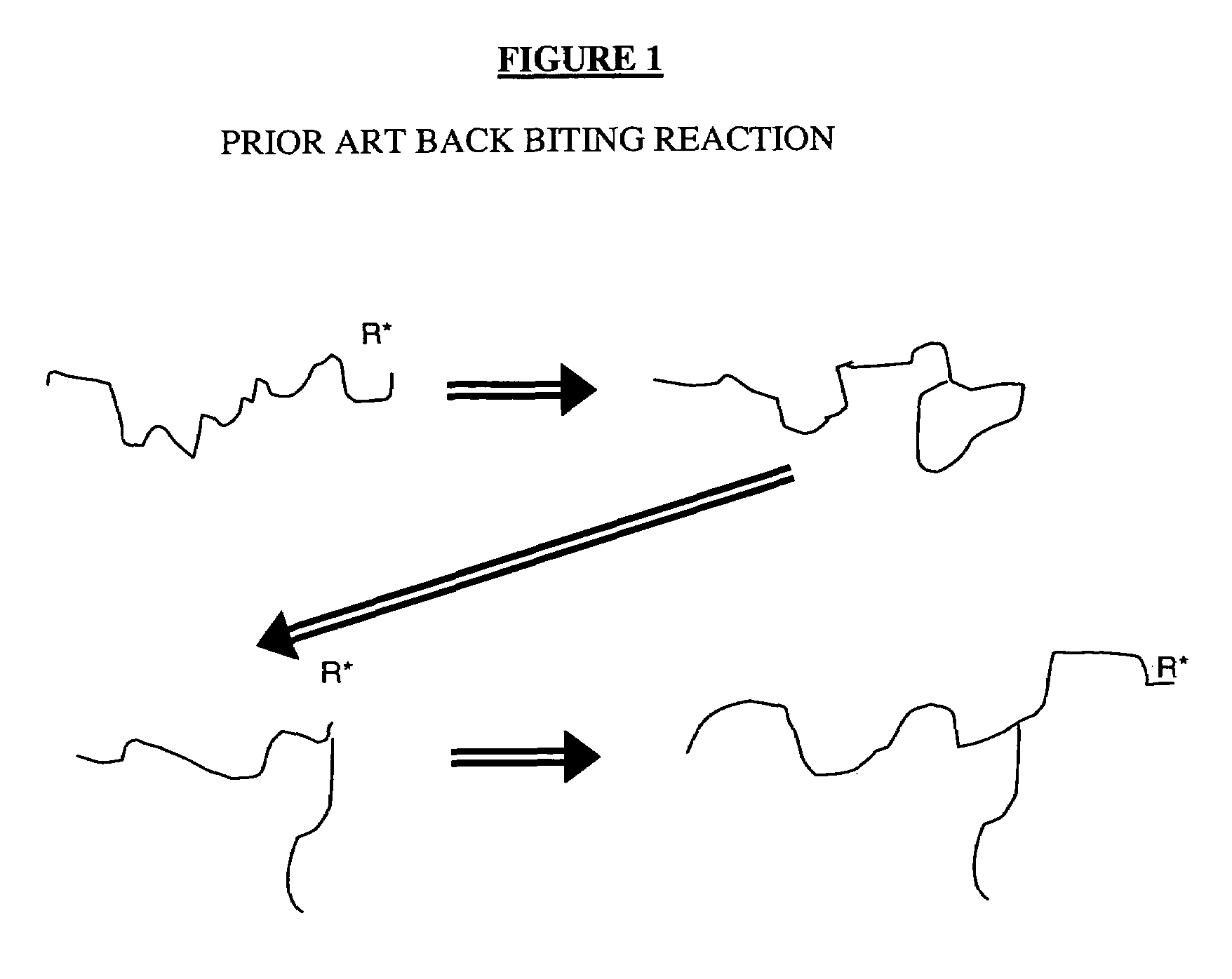Synthesis and use of well-defined, highly-branched saturated hydrocarbon polymers
a hydrocarbon polymer and saturated hydrocarbon technology, applied in the field of high-branched hydrocarbon polymers, can solve the problems of poor mechanical properties, complex tree-like structure with both short and long chain branches, incomplete suite of reactions that have not been firmly elucidated, etc., and achieve the effect of improving melt output rate and improving processability
- Summary
- Abstract
- Description
- Claims
- Application Information
AI Technical Summary
Benefits of technology
Problems solved by technology
Method used
Image
Examples
examples
Double Comb Polymer Examples
[0060]Reagents: The purification of the monomer (butadiene, 99% Aldrich), the solvents (benzene, 99.8% Aldrich, and THF, 99.9% Aldrich), the terminating (methanol, 99.9% Aldrich) and the linking agent [Cl3(CH3)Si, 99% Aldrich], to the standards required for anionic polymerization, was performed using well-established high-vacuum procedures. sec-butyllithium (sec-BuLi), prepared from sec-butylchloride (99.9% Aldrich) and lithium dispersion (99%, high sodium, Aldrich), was the initiator for all polymerizations. Magnesium turnings (Aldrich) were washed with HCl 0.1N, diethyl ether (99.9%, Aldrich) and acetone (99.9%, Aldrich), and then left to dry in vacuum oven overnight. p-chlorostyrene (97%, Aldrich) was distilled in the vacuum-line, from calcium hydride, to ampoules equipped with break-seals. Potassium 2,3-dimethyl-pentoxide-3 (R—O−K+), the randomizer, was prepared from 2,3-dimethyl-3-pentanol (99%, Aldrich) and potassium in a procedure similar to the on...
PUM
| Property | Measurement | Unit |
|---|---|---|
| temperatures | aaaaa | aaaaa |
| pressure | aaaaa | aaaaa |
| δ | aaaaa | aaaaa |
Abstract
Description
Claims
Application Information
 Login to View More
Login to View More - R&D
- Intellectual Property
- Life Sciences
- Materials
- Tech Scout
- Unparalleled Data Quality
- Higher Quality Content
- 60% Fewer Hallucinations
Browse by: Latest US Patents, China's latest patents, Technical Efficacy Thesaurus, Application Domain, Technology Topic, Popular Technical Reports.
© 2025 PatSnap. All rights reserved.Legal|Privacy policy|Modern Slavery Act Transparency Statement|Sitemap|About US| Contact US: help@patsnap.com



